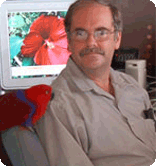Are the Princess Flower (AKA Glory Bush) and Mandevilla toxic to birds?

Dear Glenn, I’ve got two plants in my yard growing up along my aviary which I can’t find on the “Toxic Plants” or “Safe Plants” lists. Can you help? They are the Princess Flower (AKA Glory Bush) and Mandevilla. The aviary was just erected and, as soon as I put some cockatiels in it, the birds started eating the leaves of the Princess Flower right away. It didn’t seem to bother them, but they haven’t touched it since that day. I have 17 birds, all different kinds of adoptees, and I don’t want to risk their health.
Thank you very much for the service you offer to the WPT.
Cindi Eppers

Hello Cindi, Great question. This one took some research. Please keep in mind that various plants may or may not be toxic to different animal species; therefore, I don’t know that there is any definitive answer to this.
The Princess Flower or Glory Bush is in the Family: Melastomataceae, Genus: Tibouchina, Species: urvilleana. I cannot find anything that suggests this family of plants is toxic. Unfortunately I can’t find anything that states it’s not toxic either. Everything I can find states “unknown”, so I would be cautious. My feeling is if uncertain don’t take the chance.
The Mandevilla is in the Family: Apocynaceae, Genus Mandevella, with many different species. Notice “cynaceae” in the family name suggesting cyanide. This entire family is listed as toxic to humans. Oleander is included in this family. Depending on species the toxins are found in anything from the root and milky sap to all parts of the plant. The milky sap is listed as a skin irritant. Toxins and reactions from some species and various parts of the plant are: Cathartic; causing vomiting, self limiting; Glycosides causing increased pulse and temperature, dilated pupils, sweating, cold extremities, mild diarrhea, and death; Cardiac Glycosides causing burning of the mouth, drowsiness, diarrhea, vomiting, heart failure, and death.
Obviously you want to remove the Mandevilla from your aviary area and as stated above I would be cautious of the Princess Flower unless you can find something stating that it is not toxic.
Glossary:
Cathartic - Medicine or substance causing emptying of the bowels
Glycosides:
Anthraquinone glycosides - Hydrolysis yields aglycones (A nonsugar compound that is produced from the reaction of a glycoside with water. Alcohols and phenols are aglycones.) which are purgatives causing vomiting and diarrhea
Cardiac glycosides - Steriods affectiong heart function
Saponin glycosides - Hydrolysis yields a saponin (soap like substance) which has a bitter taste and is irritating to mucous membranes and may destroy red blood cells

































